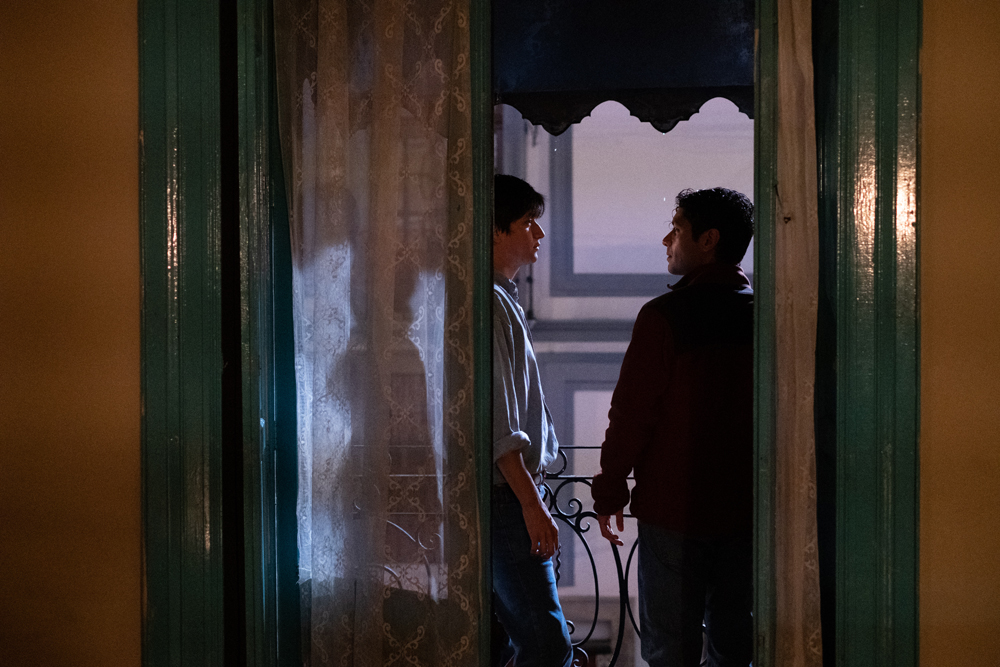Just over a year after Heidi Ewing thought she would be unveiling her debut drama “I Carry You With Me” in her hometown of New York, she could finally exhale, standing outside of Hudson Yards where the film had an outdoor premiere at the Tribeca Film Festival. Bringing a film that she had wrestled with for the better part of a decade to the city where she had gotten to know the partners in life and in business Ivan Garcia and Gerardo Zabaleta that inspired it, she could reflect on the full journey of the film and how much further it could go.
“For the first time I realized what a New York story this is because I always look at this as a Mexican story, an immigrant story, as a love story primarily,” said Ewing. “It mostly takes place in Mexico, but being there under the skyline with New Yorkers, I realized the movie belongs to New York as well.”
At long last, “I Carry You With Me” belongs to the world, having become a sensation at Sundance 2020 and its plans to capitalize on its Audience Award indefinitely delayed after theaters were shut down in the wake of the pandemic, yet as Garcia and Zabaleta could personally attest, some of the greatest achievements can only be appreciated with time. The two had done something extraordinary under any circumstances in having success in the restaurant business, but Ewing wasn’t aware of just how amazing it was in spite of their longtime friendship until after the Sundance premiere of “Detropia,” her 2012 doc with her filmmaking partner Rachel Grady, when over drinks at Main Street Pizza & Noodle, Garcia told her the story of how the two crossed the border, a remarkable act of bravery when it meant cutting themselves off from the only life they had ever known in order to stay together.
Ewing, one of the great nonfiction filmmakers, naturally was inclined to start filming Garcia and Zabaleta in the present day, but with the two unable to travel back to Mexico without risking deportation, she had no way of depicting their past in an interesting way, leading her to sit down to start writing her first narrative script since a playwriting class in college. Still, she didn’t discard the documentary footage she had already shot, leading to a truly distinctive and thrilling hybrid that sees Armando Espitia and Christian Vazquez play Ivan and Gerardo in their early twenties, just as they are starting to fall for one another and Ivan is pursuing his dreams of becoming a chef, both seemingly futile pursuits in the conservative town of Puebla where they feel compelled to hide their relationship from some members of their respective families and Ivan can’t make it past the dishwashing station in spite of his obvious culinary instincts.
Just as Ivan and Gerardo push past the limitations that have been imposed on them, “I Carry You With Me” feels as if it’s breaking boundaries as well, exuding a feeling of love that courses through the film so overpowering that any barriers in either the story that’s told or formally in how it’s told disappear in the face of a spellbinding romance. With the film set to sizzle this summer as it finally arrives in theaters, Ewing spoke about how she drew on her experience as a nonfiction filmmaker to make such a transcendent drama, working with actors for the first time and what it’s been like to carry this with her for so long.
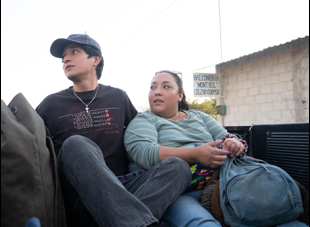
It was the only way to go. It’s a love story, it’s about memory, it’s elliptical in nature, you flash forward, you flash back. These are things that are better done in a narrative, especially the love story part and I felt like as soon as I just made that decision, I found the way forward through the movie.
I had written the movie with Alan Page Arriaga, and spent a lot of time in the characters’ heads. The real Ivan, the real Gerardo that live in New York today are not the same people they were 20 years ago, so the characters in the movie, they’re in their first relationship. They’re in their twenties, they’re in a conservative town, they’ve never traveled. It’s the first blush of love, so I was able to separate the two — the actors and who they were playing from the real guys who live in Brooklyn now. I did not have a hard time doing that because I think we all change and evolve over time and I didn’t want the actors to even meet the real Ivan and Gerardo until after we were done shooting, so they didn’t start trying to mimic who they are today.
I would just imagine that you’re an incredible director of actors. Was it an exciting prospect for you?
It was really scary. I had never directed actors. That was the point that I was the most worried about because I work with real people and when you’re working with actors who come with their own talent and their own ideas about a role, you work with them and you have to figure out how to talk to them and what you need to say to them to get the performance you want. I had never had to do that exercise. So I practiced taking a couple of classes of Adrienne Weiss’ in New York and worked on building tools for how to talk to actors in a certain way. I didn’t want to go in cold without any experience and it was nice to have a base.
Each actor requires a different hand. Some like rehearsals, some don’t want to rehearse. Some are better at the third takes, some have diminishing returns, so really it’s a case-by-case situation with actors, and it was definitely the thing that I was most freaked out by, but I really enjoyed it in the end. The actors and I really got along and they had a lot of input in the roles, which I think that benefited the movie in the end. Any person that I cast, any actor, they would come to my apartment and we would talk about the role and I would ask them, “Why did you take this role on? Do you know anyone similar to this, like this person?” And they would start talking, “Oh yeah, this is exactly like [how] my grandfather used to say this and do that and it reminded me so much,” so I would get them to talk [about] their grandfather and I would say, “That’s wonderful. Can we put that in the script?” So I would add little tiny details and I think that helped them in their role because they felt like they had a hand in it. I feel like the performances were that much more specific and rich because of that process.
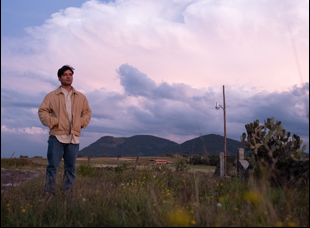
I already cast Armando to play Ivan when I was looking for his Gerardo, and I put Armando in a room with many different actors and there was no chemistry. When I found Christian, I liked his audition and I put them in the room together and they’d never met, even though they’re both actors in Mexico City. It was electric. We did some role-playing and we just goofed around a little bit. I had them improvise a couple of phone calls and I knew that the movie depends on the chemistry between the protagonists, so I just knew it when I saw it and I was so relieved.
I’ve heard location scouting was a pretty exciting part of the process too.
We don’t get to location scout that much in documentary — you have to make something magical about what you’re given. That’s an art form and a beautiful, special thing that we do as documentary filmmakers, but [in fiction, you] have a choice of the 12 locations. It could be the decrepit mansion that [Ivan and Gerardo] met in, and it was so fun to have that choice and to be able to tech scout and figure out which locations would give me what I wanted. But the amount of preparation that goes into every single scene and every single shot is so massive in fiction. There’s so much more prep. In documentary, you get an idea and you can roll that day. In narrative, you have to just have all this faith that one day you’re going to be able to do it, and there’s all this planning. But I had amazing location scouts in Mexico City and it’s so cinematic, I really enjoyed all the prep that went into each and every single location and it’s a very visually rich movie. We just wanted enhance the look in every way we could and locations gave us that.
At Sundance, you had mentioned because it was a private story, you were attracted to this idea of long lens voyeurism. Did the look of this come pretty quickly to you?
I worked a lot with Juan Pablo Ramirez, an amazing cinematographer on this movie who you’re going to hear a lot more from over his career. We spent months on Zoom figuring out shot by shot the look and feel of the movie because I did want voyeurism, I didn’t want the camera to anticipate the action. I wanted to mimic some of what we do in documentary, which has sort of a looseness and a voyeurism that the audience feels like they’re listening in on something that maybe they’re not supposed to be there for. I didn’t want a locked down look and feel or anything antiseptic or unfriendly. I didn’t want to use a lot of tripods or to do the traditional cover [shot], the reverse shot, and the other reverse. We really wanted to have a flow and a fluid camera and give the actors a lot of space to work with and then follow them, so it’s like a heightened realism.
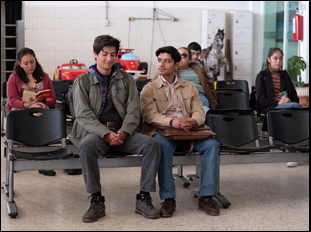
Oh yeah, there’s one scene in a fruit market and Ivan, the young aspiring chef, is shopping for groceries in order to make Chiles en Nogada for his new boyfriend at home and he wants to get exactly the right pepper and pomegranates, so we basically went in advance and we shot from a long lens. The vendors were totally okay with it, and they treated him like anyone else. He waited in line with other women who were shopping started talking to him. And we were behind fruit carts filming. Those were some of the scenes that the actors enjoyed the most because they were like, “This is actually happening. I’m actually engaging with strangers” and they really loved it. We did that a bunch of times, which was very unorthodox for a narrative.
From what I’ve heard, there were initially only four lines in the script for the dinner table scene…
Yes. The scene, [because it was] an uncomfortable dinner, there’s only a few lines and then I worked privately with the actors, so the other actors didn’t know what was going to be happening and they had to actually react. I had a separate plan with each actor and then we’d put them at the table and then they all knew what they were going to do, but they had to also react to what they didn’t know was coming, so it really became almost improvised.
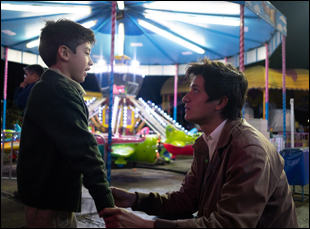
That is essential to the making of this film. She’s my longtime editor and she read various versions of the script before I even got the financing. I said, “You have to cut this movie for me. I’m not going to edit this with you without you,” so she was essential to the creative process. She was in Mexico on location, editing and we had a lot of fun cutting back and forth, which we do in the third act [after] the first three quarters of the movie becomes the memory of the current guys, so it’s like the younger actors are remembering their childhoods and then the older actors are remembering their younger self, so there’s this conversation happening between the three eras. Whenever that worked — whenever we would put the childhood memory in the head of the actor at the right moment [in the edit] and the moments when we would cut forward to the real subject, sometimes there was a conversation that was just beautiful and it was trial and error.
We put the memories in many different places in the edit, and we really did a lot of shaping and restructuring, which I’m used to doing in documentary, but when it hits just right, it’s scintillating to see the three age groups line up, which we do a couple of times in the movie include the very end. You see all three ages — Ivan as a child, his 20-something year old self and his current self, they’re talking to each other and they’re all having the same memory at the same time. When that happens, it really gives you chills.
When Ivan and Gerardo can’t cross the border themselves, I understand you’ve been able to act as a bit of a bridge in attending family events and of course, the film gets to show each side what life is like on the other. What’s it like to have had that role over the years?
It’s been a beautiful privilege to act as a small bridge between them and their families. It’s been such a gift that they shared their families with me and everybody was so open and generous in the making this movie and also just as friends and human beings. I was going back and forth visiting long before we were ever making a movie, so I feel like we’ve adopted each other into our lives and it’s something I really cherish. It’s a beautiful thing — and one day they’ll be able to go back.
“I Carry You With Me” opens on June 25th in Los Angeles at the Sunset 5 and Landmark and in New York at the Angelika Film Center and City Cinemas 123 and will expand in the weeks to come. Check here for theaters near you.




